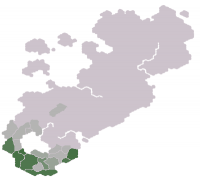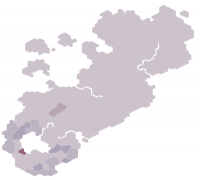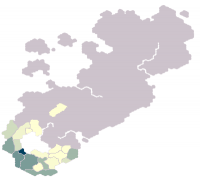Triumvirate Religion
About the Triumvirate
|
|
|
|
|
Three goddesses that represent aspects that Itorunt holds dear. They also represent the seasons and winds from a compass point. There is a fourth goddess, known as the Crone, who is not usually directly worshiped, as she holds negative aspects.
- Elysia represents Spring and the East. Her symbol is a torch which warms the cold away. She is the youngest and stands for enlightenment and truth. Truth and honesty shine forth, but also self-discovery and curiosity. She symbolizes the hopefulness of youth.
- Aulysia the South wind is a warrior goddess. She represents summer, when most wars are held. She is middle-aged and strong. Her symbols are the shield, sword, and spear. She represents vanquishing evil. Her shield protects all and her weapons reach far.
- Zama the West wind is a matronly figure; she represents fall and the harvest. Her symbols are the sickle and scales. The scales represent the accounting of things, for many financial transactions happen at harvest time, and the sickle for the harvest. The areas of the mind, diplomacy, trading, and negotiations are her area of expertise.
- Ballisa the North wind, also known as the Crone, controls the north wind that brings the cold of winter. She adds mystery to the religion and stands for the unknown. The Crone is the Queen of the Underworld and cares for little besides those that fall under her realm. Until they are dead, she has little use for them. Her priests usually act to appease her in the winter months and pray for the undead to quiet.
- Elysia represents Spring and the East. Her symbol is a torch which warms the cold away. She is the youngest and stands for enlightenment and truth. Truth and honesty shine forth, but also self-discovery and curiosity. She symbolizes the hopefulness of youth.
Each goddess represents specific aspects with real life attachments. The cycle of the seasons and life are represented. The mystic symbols are the torch of enlightenment, the sword and shield of war, and the scales of balance. All represent aspects that we hold dear. General followers worship each aspect of the four winds equally, and the first rank of priesthood balances each of the goddesses. Higher-ranking priests begin to specialize their teachings into one aspect of the four. Finally, the Prophet of the four completes the cycle and worships all four again with equality.
The Lost Scrolls of the Triumvirate were found by Emanuel of Itorunt. Emanuel said he was traveling to do bureaucratic work in Dayr when he saw a previously-sunken cave in the region of Zamor. Out of curiosity, he and his squire ventured up to the cave. Emanuel and his squire saw nothing in the shallow cave and decided to set up camp. During the night, Emanuel had a dream in which he saw four women. One was young and beautiful; holding a torch, she beckoned for Emanuel to come to the back of the cave. She held her torch up against the back of the cave, and Emanuel could see that there was once a shelf in the cave. The woman pointed at the ground and Emanuel could see a tunnel with handholds cut into the rock. There were three women at the bottom of the tunnel, and they gestured for him to climb down. Emanuel climbed down into the lost Library of the Triumvirate. Emanuel began to speak to the women, but suddenly was awakened by his squire. The cave was once again cold and dark. Morning was on the horizon, and Emanuel explained his dream to his squire while they built a fire to cook breakfast and warm themselves. Emanuel and his squire discovered that indeed the tunnel existed, but it needed to be dug out. Emanuel and his squire returned to Semall and bought digging equipment. They returned to Zamor and excavated the tunnel, unearthing the forgotten scrolls of the Triumvirate. Emanuel began translating the scrolls, and now spring has finally arrived for the Triumvirate in Itorunt.
Long spring and summer, even longer days of darkness
After teachings about scrolls were being spread, worshiping of the Three flourished over the whole south of continent. Warriors found their words encouraging and full of promising guidance on how to excel in chivalry. Many temples were built, shrines were present everywhere, people were gladly accepting faith that was never imposed by force, but by strenght of values it presents.



